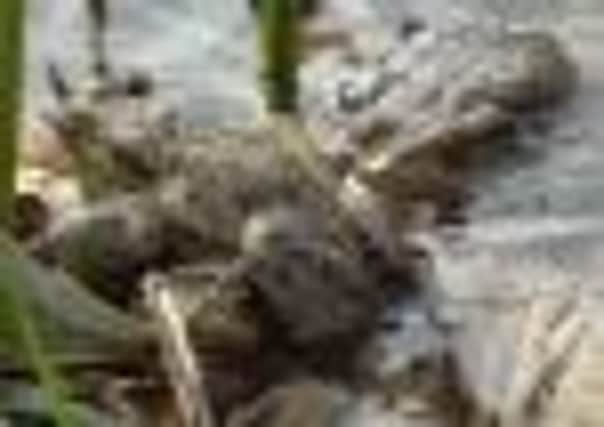A clear vision for the River Hull


A project carried out over the last three years aimed at restoring, enhancing and creating wetland habitats along the course of the River Hull and its catchment areas has been hailed a huge success, despite the many and varied challenges posed by the different environments that is passes through.
In urban areas, such as Hull and Beverley, the emphasis has been on educating and informing people about the river’s importance, and showing them how they can help to preserve wetland habitats for future generations to enjoy.
Advertisement
Hide AdAdvertisement
Hide AdJon Traill, a project officer for the Yorkshire Wildlife Trust, the organisation that has overseen the work, explained: “People see this river flowing through the middle of the city that’s a mucky brown due to all the sediment from the Humber. Many people don’t realise that it’s the same river that has its headwaters around Driffield, where it’s pristine wildlife habitat.
“We’ve been taking them out of Hull to sites around Beverley and Driffield so that they can see what the river has to offer.
“There’s also a social aspect to it; people will have nothing to drink unless they look after the river. Few people realise that the River Hull supplies drinking water, but water from the river is treated at Yorkshire Water’s Tophill Low site between Driffield and Beverley.”
The Yorkshire Wildlife Trust has worked closely with a number of organisations on the project, including Hull City Council. One of the major success stories was the opening, last year, of Hull’s first nature reserve at Noddle Hill in Bransholme, a deprived area on the north-eastern edge of the city. The 118-acre site offers wetland habitat that has benefited a range of species, including rare water beetles, great crested newts, grass snakes and water voles.
Advertisement
Hide AdAdvertisement
Hide AdJohn said: “These and other wetland species are considered to be good indicators of the quality of a habitat. We also look for certain emblematic species, including barn owl, which are quite rare in some parts of Yorkshire, although there are more in East Yorkshire.”
If there’s one species that acts as a barometer of the overall health of the river, it’s the otter. Although otters never completely disappeared from the River Hull, the population had plummeted by the late 1970s.
The most northerly chalk river in the UK, the River Hull was once blighted by pollution from heavy industry.
John said: “We’ve been working to improve the river for all wetland species, including fish, and the otters have benefited from this. They need fish in their habitat to survive. The fact that otters are doing well suggests that we’re getting something right.”
Advertisement
Hide AdAdvertisement
Hide AdNow that the river is cleaner, even urban areas are providing important wildlife habitat and otters have been recorded on the stretch that flows through the city of Hull.
In the rural areas closer to the River Hull’s source, the project has involved work with farmers and landowners to improve habitats.
Examples include the creation and restoration of ponds and reed beds; the sensitive management of drains, ditches and dykes; and work to repair damaged riverbanks using hazel fagots, which are sausage-shaped bundles of hazel branches left over from coppicing, a traditional method of managing hazel woodland. These totally sustainable by-products of woodland management are used to rebuild sections of bank, where they give other plants a chance to establish themselves before rotting away over time.
John said: “Farmers and landowners have been very supportive; most are happy to do their bit and want to see wildlife on their farms but just didn’t know where to find the funding to do it.”
Advertisement
Hide AdAdvertisement
Hide AdTamara Hall, who farms at Molescroft Grange near Beverley, said: “Jon did a survey of our farm and found that there were water voles. He then recommended that we didn’t plant too many hedges on the side of ditches if they weren’t already there. The fact we had water voles here supported our application to join Natural England’s Higher Level Stewardship scheme. They also arranged for a group of volunteers to install an otter holt. I only ever hear other farmers say positive things about Jon and his team, which says a lot I think.”